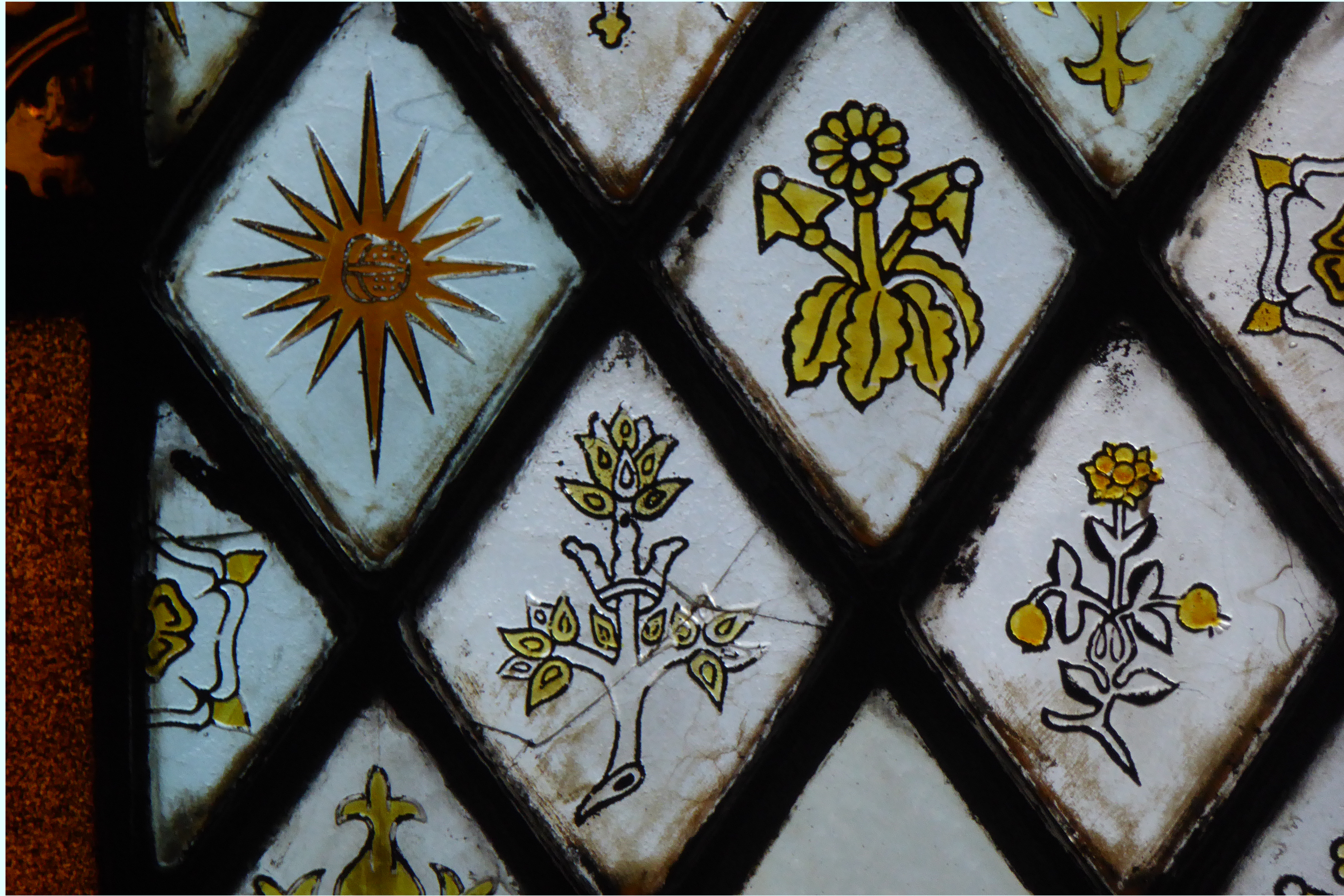

Whole window. Right: Close-up of quarry pattern.
Window at the west end of the north aisle, at St Denys, Walmgate, York. Powell & Co., 1846-47, installed as part of a major restoration under Thomas Pickersgill, later York City Surveyor (Kightly 16, 22). The glass in this Victorian window, and others like it in the west of the church, at the ends of the aisles and in the tower, is described as "impressed" or "rolled." The individual quarries are set in an iron lattice, not individual lead cames (i.e. lead strips into which the edges of the glass are set in more complex windows).

Most of the quarries bear linear outline motifs made by the impressions from a roller, and these were later coloured. But a few quarries are of a plain blue glass with a surface textured all over – similar to glass used nowadays in bathrooms. It was an up-to-date but relatively cheap method of making large windows, and by the mid nineteenth century St Denys was no longer a church with rich patrons. But even when cost was not an issue, decorative quarries could be used in various ways and to great effect.
Links to a few other examples
- Jesus on the Sea of Tiberius, at St Peter's, Bournemouth (window with Morris & Co.s hand-painted quarries)
- The Ascension, at Inverness Cathedral (window by John Hardman, with a grisaille quarry border letting in extra light)
- Spring, now in the Metropolitan Museum, New York (window by Daniel Cottier using squares rather than diamond shapes in the border)
Photographs and text by Rita Wood, and formatting by Jacqueline Banerjee. You may use these images without prior permission for any scholarly or educational purpose as long as you (1) credit the photographer and (2) link your document to this URL, or credit the Victorian Web in a print document. [Click on the images for larger pictures.]
Bibliography
James Powell and Sons. Grace's Guide. Web. 20 October 2021.
Kightly, Charles. The Church of Saint Denys, Walmgate, York, History and Guide. 2018.
Leaded & Stained Glass Windows Glossary. Sheriff Stained Glass (a useful list). Web. 20 October 2021.
"Ornamental Victorian Window Glass: Decorative Glass." Sash Window Specialist (a particularly attractive and informative site, almost a book in itself, assembled, as stated, "to ensure the history of these interesting glasses was open to anybody with an interest"). Web. 20 October 2021.